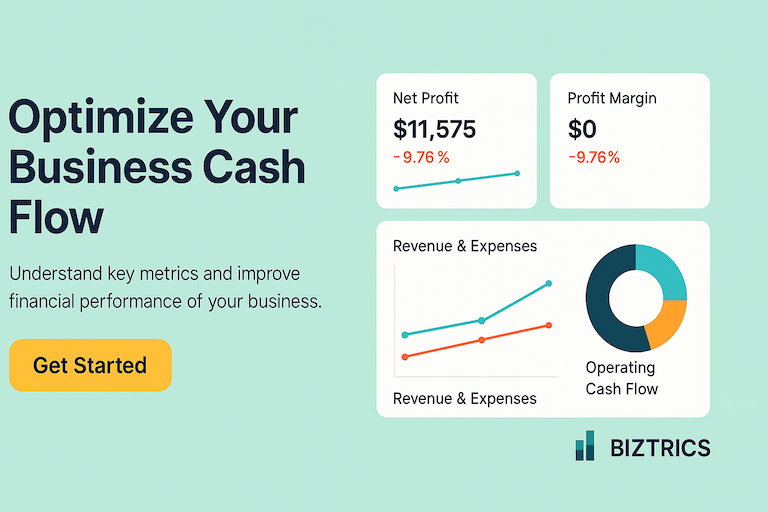Optimizing Cash Flow for Small Businesses
Learn how to improve your cash flow management with these proven strategies.
Sarah Johnson

Optimizing Cash Flow for Small Businesses
Cash flow is the lifeblood of any small business. Without proper cash flow management, even profitable businesses can struggle to stay afloat. In this article, we'll explore proven strategies to optimize your cash flow.
Understanding Your Cash Flow Cycle
The first step to optimizing cash flow is understanding your cash flow cycle. This includes:
- How quickly you collect payments from customers
- How long you take to pay suppliers
- How much inventory you keep on hand
By understanding this cycle, you can identify bottlenecks and opportunities for improvement.
Strategies for Improvement
Once you understand your cash flow cycle, you can implement strategies to improve it:
1. Accelerate Accounts Receivable
The faster you collect money owed to you, the better your cash flow. Consider these approaches:
- Offer incentives for early payment (e.g., 2% discount if paid within 10 days)
- Implement stricter credit policies for new customers
- Send invoices immediately after delivering products or services
- Make it easy for customers to pay with multiple payment options
- Follow up promptly on overdue accounts
2. Optimize Accounts Payable
Managing when and how you pay your bills can significantly impact cash flow:
- Negotiate better terms with suppliers (e.g., net-30 or net-60 instead of net-15)
- Take advantage of early payment discounts when cash is available
- Schedule payments strategically to maintain optimal cash levels
- Consider using credit cards for certain expenses to extend payment timing
3. Manage Inventory Efficiently
Excess inventory ties up cash that could be used elsewhere:
- Implement just-in-time inventory management where possible
- Identify slow-moving items and reduce their stock levels
- Negotiate consignment arrangements with suppliers for high-value items
- Use inventory management software to track levels and automate reordering
4. Leverage Technology
Modern financial tools can help streamline cash flow management:
- Use accounting software to automate invoicing and collections
- Implement electronic payment systems to speed up transactions
- Utilize cash flow forecasting tools to anticipate future needs
- Set up automatic alerts for low cash balances or overdue receivables
5. Establish Cash Reserves
Building a cash reserve provides a buffer against unexpected cash flow challenges:
- Aim to maintain at least 3-6 months of operating expenses in reserve
- Consider a business line of credit as backup for temporary shortfalls
- Regularly contribute to your reserve during strong cash flow periods
Measuring Success
To track your progress in optimizing cash flow, monitor these key metrics:
- Days Sales Outstanding (DSO): Average time it takes to collect payment after a sale
- Days Payable Outstanding (DPO): Average time it takes to pay vendors
- Inventory Turnover Ratio: How quickly inventory is sold and replaced
- Cash Conversion Cycle: The time it takes to convert investments in inventory and other resources into cash flows
- Operating Cash Flow Ratio: Cash generated from operations relative to current liabilities
Conclusion
By implementing these strategies, you can significantly improve your cash flow position and ensure your business has the funds it needs to operate and grow. Remember that cash flow optimization is an ongoing process that requires regular attention and adjustment.
With Biztrics' financial management tools, you can gain real-time visibility into your cash flow and identify opportunities for improvement. Our platform helps you track key metrics, forecast future cash needs, and make data-driven decisions to optimize your business's financial health.